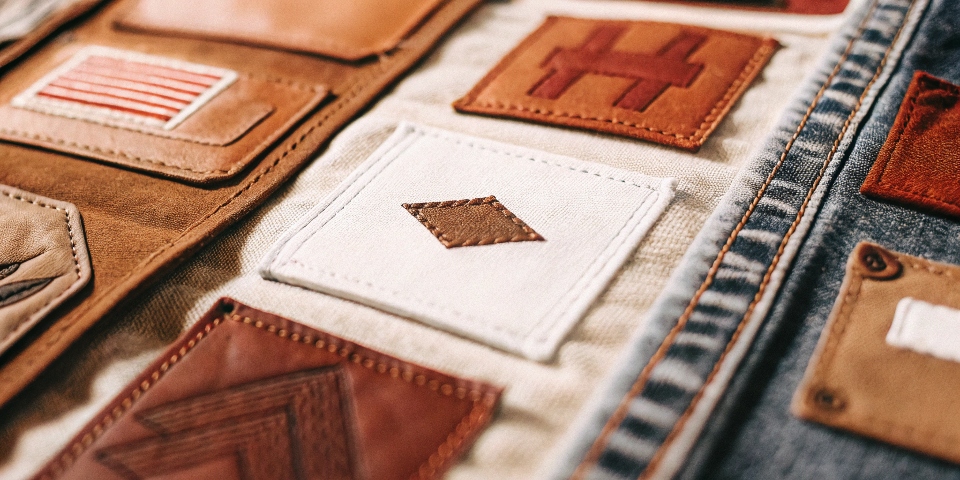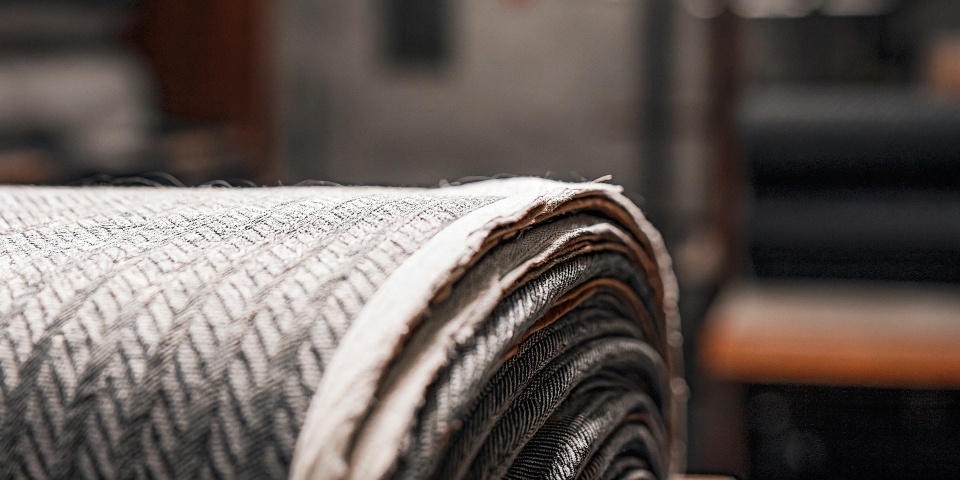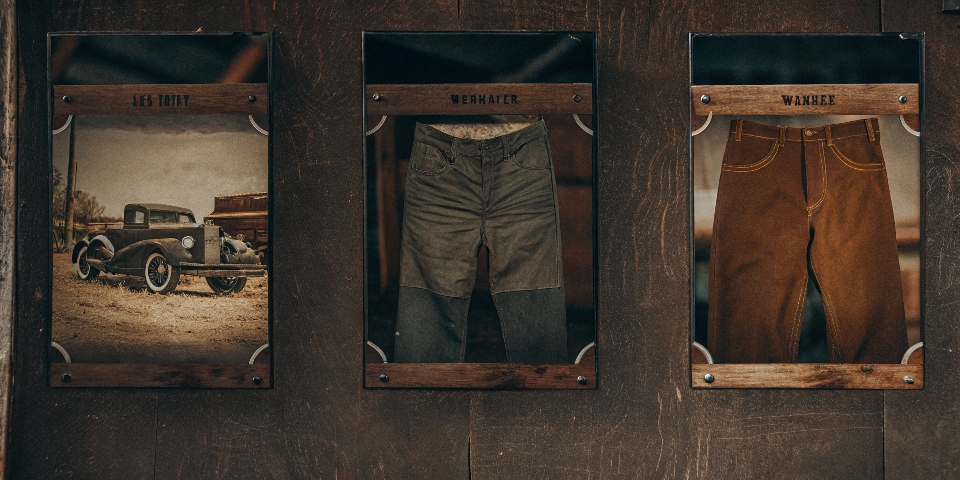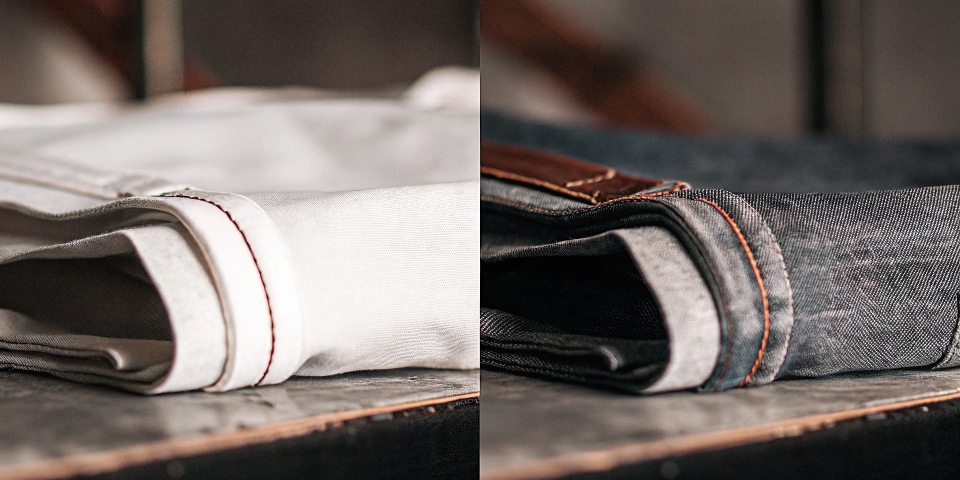You walk through a store and see dozens of denim brands, from names you know to ones you've never heard of. You wonder why a pair from one brand costs $50 and another, which looks almost identical, costs $500.
The differences between denim brands come down to their core philosophy, which dictates the quality of their fabric, the details of their construction, and the specific fits they choose to perfect. Premium brands sell a unique point of view, not just a pair of pants.
Having run the DiZNEW factory for over two decades, I've produced jeans for a huge range of brands. I see the choices they make up close, from the specific cotton they order to the type of thread they use in their pockets.
A designer like Dean isn't just looking for a factory; he's looking for a partner who understands his vision. This is the essence of a brand. Let's peel back the layers and see what truly sets them apart.
Which brand has the best quality denim?
You want to buy the "best" jeans, but everyone has a different opinion. You search for a clear winner but end up lost in forums debating fabric weight and loom types, more confused than when you started.
There is no single "best" brand for everyone. The best brand is the one whose specialty matches your personal taste. Some brands are masters of vintage reproduction, others focus on unique, textured fabrics, and some perfect modern fits.
"Best" is a word that depends entirely on what you're looking for. From my perspective as a maker, quality comes in many forms. Let's look at some of the highly respected Japanese brands, which many denim lovers consider the best.
Take the brand Warehouse. They are famous for their obsessive approach to recreating vintage jeans. They offer two main fabrics. One is a 13.5oz blend of three different American cottons, which creates a smooth fabric that fades to a light, classic blue.
Their other signature fabric is a 14.5oz denim made from Memphis cotton. I've worked with this fabric, and it's one of the most impressive I've ever seen. It's full of texture and character, what we call "slub" and "nep," and it fades to a beautiful, grainy white.
Warehouse is just one example. The world of premium denim1 is full of specialists.
| Brand | Known For | Best For The Person Who... |
|---|---|---|
| Warehouse | Perfect vintage reproductions and beautiful fading fabrics. | ...loves the classic look and feel of mid-century jeans. |
| Samurai Jeans | Heavyweight, textured-"slubby" fabrics and modern fits. | ...wants fast, high-contrast fades and unique details. |
| Full Count | Softer, very comfortable fabrics and classic high-waisted cuts. | ...values comfort above all, wanting jeans that feel like sweatpants. |
| The Strike Gold | Extremely textured fabrics and modern, low-rise slim fits. | ...loves "in-your-face" fabric character and sharp details. |
| Studio D'Artisan | Durable, classic fabrics and a wide variety of cuts. | ...appreciates heritage and playful details like their pig mascot. |
The "best" brand is the one whose story and product connect with you.
What are the big 3 denim brands?
You hear about iconic legacy brands and wonder which ones truly built the industry. The market is so crowded with new labels that it's hard to know which names have real historical weight.
Historically, the "Big 3" founding fathers of American denim are Levi's, Lee, and Wrangler. These companies didn't just sell jeans; they invented and popularized them, setting the standards that everyone else follows to this day.
These three brands are the foundation of the entire denim world. Every single pair of five-pocket jeans2 we make at the factory, no matter how modern or specialized, owes its existence to them. Their influence is impossible to overstate.
Levi's started it all. They patented the riveted blue jean in 1873, creating the original template with their iconic 501 model. They established the five-pocket design, the copper rivets, and the leather patch as industry standards.
Lee was a major competitor that introduced key innovations. They created the first zip-fly jeans and the iconic "Storm Rider" denim jacket with its corduroy collar and blanket lining. They pushed denim from pure workwear into more casual, everyday fashion.
Wrangler targeted a specific audience: the professional rodeo cowboy. Their designs featured details for riders, like flat rivets that wouldn't scratch a saddle, a higher rise in the back, and extra belt loops. They proved that denim could be tailored for a specific lifestyle.
These three companies are the pillars of the industry. The high-end Japanese brands we discussed earlier often dedicate themselves to reproducing classic models from the Big 3, which shows their incredible, lasting influence.
Which type of denim is best?
You hear denim experts use words like "raw," "selvedge," and "sanforized." You want to choose the right pair but feel overwhelmed by technical terms, fearing you'll pick the wrong kind for your needs.
The "best" type of denim is the one that fits your lifestyle. Raw selvedge denim is best for enthusiasts who want to create unique fades. For those seeking immediate comfort and easy care, a washed, non-selvedge stretch denim is superior.
As a manufacturer, we handle all types of denim fabric, and each one serves a different purpose. Let's break down the main categories so you can decide what's best for you.
- Raw vs. Washed3: Raw denim is denim in its purest state—unwashed, dark, and stiff. It's like a blank canvas. The wearer's daily movements create unique creases and fade patterns over time. Washed denim has been industrially washed, softened, and often distressed to look and feel broken-in from the first wear.
- Selvedge vs. Non-Selvedge4: This refers to how the fabric is made. Selvedge denim is woven on old-fashioned, narrow shuttle looms. This creates a clean, "self-edge" that won't fray, visible as a colored line when you cuff your jeans. It's a hallmark of slower, high-quality production. Non-selvedge denim is made on modern, wide projectile looms, and the cut edges are sewn with an overlock stitch to prevent fraying.
| Denim Type | Pros | Cons | Best For |
|---|---|---|---|
| Raw Selvedge | Creates personal, unique fades; durable | Stiff at first; requires a break-in period | The denim enthusiast who loves the process. |
| Washed Selvedge | High-quality fabric; comfortable | Fades are pre-determined | Someone who wants quality without the break-in. |
| Washed Stretch | Maximum comfort and flexibility | Less durable; not for fade purists | The person prioritizing everyday comfort and fit. |
What is the difference between cheap and expensive jeans?
You hold a $40 pair of jeans next to a $250 pair, and they look almost the same. You feel you're just being asked to pay for a fancy logo and can't see a real reason to spend more.
The difference is in the invisible details. Expensive jeans use superior, custom-developed fabrics, stronger and more detailed construction methods, and are often made in countries known for high-quality craftsmanship, all of which increases the cost.
When a brand places an order with my factory, the final cost is built from many small decisions that add up. A cheap pair of jeans is cheap because every possible corner has been cut. An expensive pair is priced to reflect the quality of its components and the time it took to assemble them.
Fabric is the Biggest Factor
The custom 14.5oz Memphis cotton fabric5 used by a brand like Warehouse can cost many times more per meter than the generic, short-staple cotton used in mass-market jeans. The expensive cotton is stronger, softer, and has unique characteristics. The cheap cotton is made for one purpose: to be cheap.
Construction is a Close Second
Time is money in a factory. A high-quality pair of jeans might have a high stitch count6 for durability, complex chain-stitched hems, hidden rivets in the back pockets for strength, and custom-branded buttons and rivets. Each of these details requires more time, more skill, and sometimes specialized machinery. A cheap pair uses the fastest, simplest construction possible.
| Feature | Cheap Jeans ($40) | Expensive Jeans ($250+) |
|---|---|---|
| Fabric | Thin, generic cotton. Often feels flimsy. | Custom, long-staple cotton (e.g., from Japan, USA). |
| Dye | Quick chemical dye. Fades poorly. | Deep, natural indigo dye. Fades beautifully. |
| Stitching | Low stitch count, polyester thread, messy finish. | High stitch count, often cotton thread, clean finish. |
| Hardware | Lightweight, generic, unbranded buttons/rivets. | Heavy, custom-designed, branded hardware. |
| Country of Origin | Made for mass volume in low-cost regions. | Often made in Japan, USA, or Italy for craftsmanship. |
Conclusion
The differences between denim brands are real and significant. They lie in the quality of the fabric, the integrity of the construction, and the vision of the fit, creating a truly different product.
-
Discover the characteristics of premium denim and why it matters for quality and style in your wardrobe. ↩
-
Explore the evolution and significance of five-pocket jeans, a staple in denim fashion, to understand their lasting impact. ↩
-
Understanding the differences can help you choose the right denim for your style and comfort. ↩
-
Exploring this topic will enhance your knowledge of denim quality and production methods. ↩
-
Explore the unique advantages of custom Memphis cotton, known for its strength and softness, enhancing the quality of jeans. ↩
-
Learn how a high stitch count contributes to the durability and quality of jeans, making them a worthwhile investment. ↩











